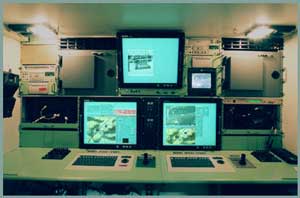The U.S. Army is enhancing the RQ-7B Shadow Tactical Unmanned Aircraft Systems (TUAS) with a wing replacement kit extending the wing span of the RQ-7 from 4.26 (14 ft) to 6 meters (20 ft). The larger wing increases the size of the aircraft’s fuel cell, extending its endurance by 50% to nine hours. The redesigned wing also includes hard points for external stores. The enhanced UAV will be capable of carrying almost twice the weight of the current drone, increasing payload capacity from 60 to 110 lbs. The enhanced Shadow is carrying more fuel and more payloads internally. The standard gimbaled EO ball is being enhanced with the integration of a laser designator. Additional hardware includes a communications relay and standardized Tactical Common Data-Link (LCDL). In addition, new lightweight weapons or QuickMEDs style aerial delivery pods will be carried underwing.

The Shadow fleet update program, also introduces new wiring harness and software modifications required to operate new multi-sensor payload systems comprising a laser designator payload. The enhances Shadow also employs a new electronic fuel injection engine and fuel system, increasing the system’s reliability under the wide range of environmental conditions encountered by fielded Shadow systems.
Sofar the Army and the Marine Corps have ordered 115 Shadow systems. 76 systems have been fielded — 69 to the Army and seven to the Marine Corps. Under the current fleet enhancement program AAI is delivering 100 wing sets for the Shadow fleet update program. The company is also offering further enhanced variant known as Shadow 7C, equipped with larger fuselage and wings, and powered by a diesel engine, increasing payload capacity to 500 pounds. This variant could be fielded by 2014, if the Army decides to fund the program.
 The US Army Aviation is looking into potential weapons that can be loaded on the Shadow and operated with its current POP 300D laser designator payload multi-sensor system. Such weapons should be able to engage stationary and moving targets such as light vehicles and dismounted combatants in day and night conditions with low collateral damage when launched from a Shadow UAS flying at speeds of 60-70 knots and between 5,000 and 12,000 feet Above Ground Level (AGL). Terminal accuracy must be on the order of that demonstrated by currently fielded Semi Active Laser / Imaging Infrared / Millimeter Wave (SAL/IIR/MMW) weapon. The service is interested in mature technologies that can be fielded within 12 months of a contract award. The Army has set the weight threshold for these weapons at 25 lbs, therefore limiting most missile derivatives, except for the smallest ones such as Laser Spike and Griffin and free-fall ADM. The weight limit refers to the whole system including munition, launcher and associated wiring and interface.
The US Army Aviation is looking into potential weapons that can be loaded on the Shadow and operated with its current POP 300D laser designator payload multi-sensor system. Such weapons should be able to engage stationary and moving targets such as light vehicles and dismounted combatants in day and night conditions with low collateral damage when launched from a Shadow UAS flying at speeds of 60-70 knots and between 5,000 and 12,000 feet Above Ground Level (AGL). Terminal accuracy must be on the order of that demonstrated by currently fielded Semi Active Laser / Imaging Infrared / Millimeter Wave (SAL/IIR/MMW) weapon. The service is interested in mature technologies that can be fielded within 12 months of a contract award. The Army has set the weight threshold for these weapons at 25 lbs, therefore limiting most missile derivatives, except for the smallest ones such as Laser Spike and Griffin and free-fall ADM. The weight limit refers to the whole system including munition, launcher and associated wiring and interface.

















